Affiliate links on Android Authority may earn us a commission. Learn more.
I tried Beeper to consolidate my messaging apps and realized that's a bad idea
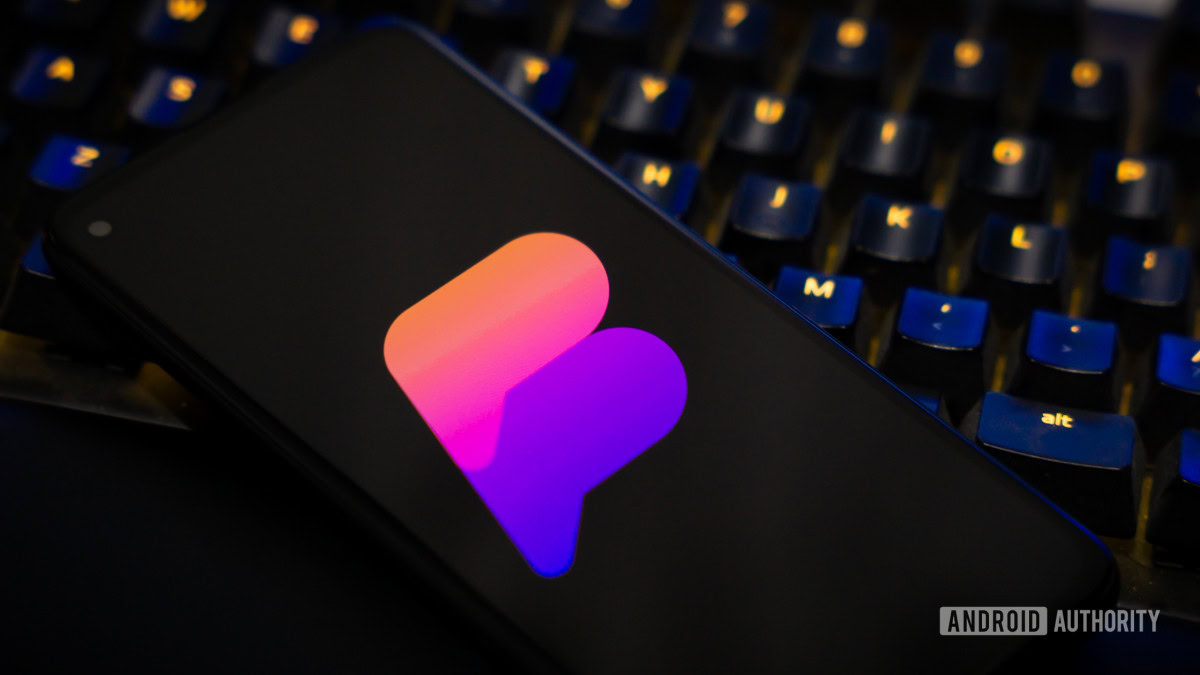
In 2020, Eric Migicovsky — the co-founder of Pebble, one of the early smartwatch companies — announced the creation of the Beeper app. In a lengthy blog post, Migicovsky explained how Beeper would “bridge all our chat networks into one client.” In other words, he wanted to ease our suffering from the overwhelming number of messaging apps we use by bringing them all together into one hub. Later, Migicovsky also promised the ability for Beeper users to use iMessage on Android, which is considered the holy grail of messaging app experiences.
Once Beeper started gaining some steam, I signed up for the waitlist. It took over a year (407 days, to be specific), but I finally gained access to the service, which is still in beta. Excitedly, I set it up, all the while thinking, “This is going to solve all my messaging problems!”
Unfortunately, Beeper didn’t solve any of my problems. In fact, now that the dust has settled, I think Beeper — and any service geared towards combining many messaging apps into one — creates more problems than it’s worth. The real solution to our messaging app deluge is much simpler.
Are you looking to consolidate your messaging apps?
On paper, Beeper is an app I’ve wanted for a very long time
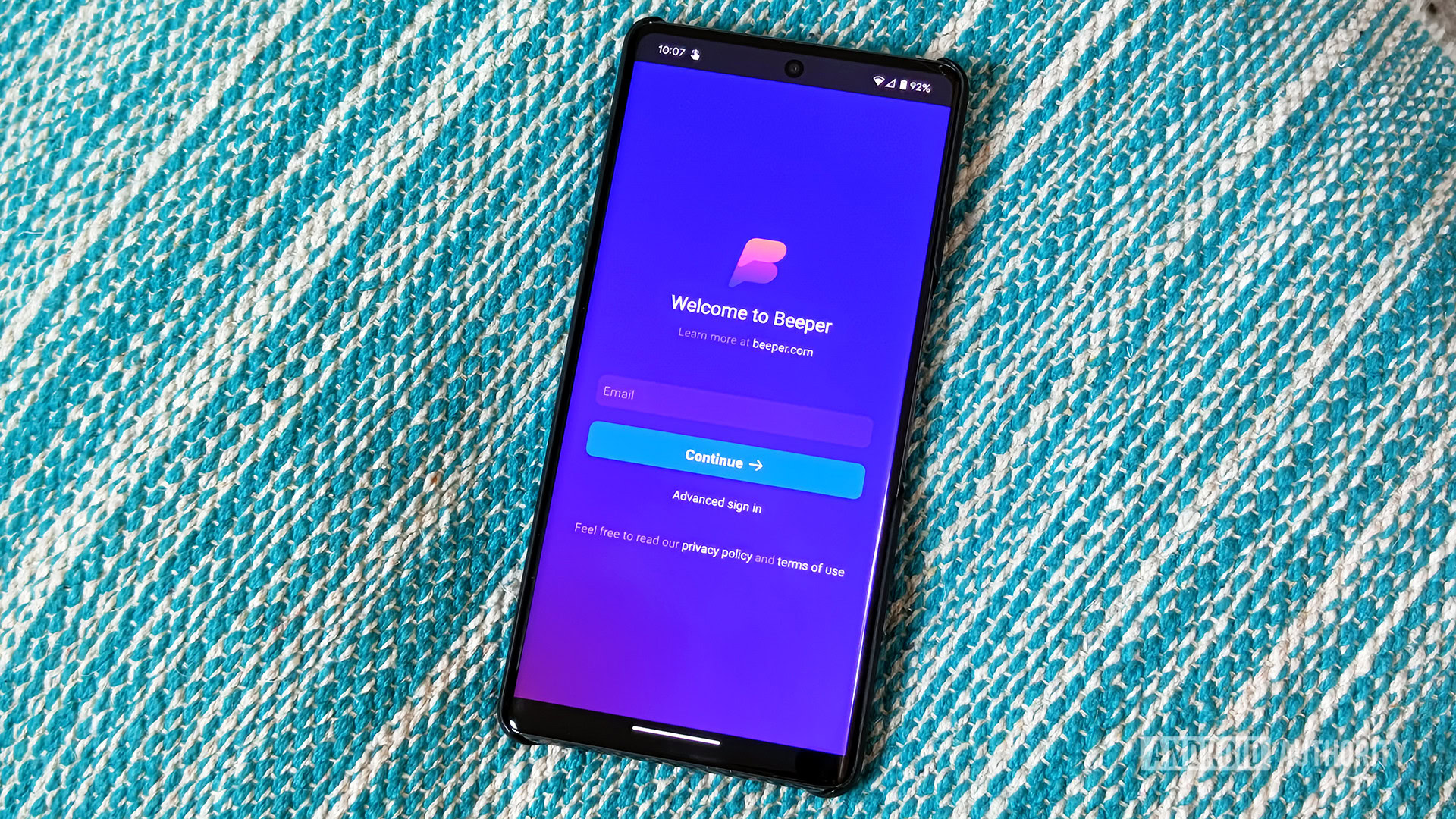
On my phone and laptop, I regularly use a whopping nine chat apps. My favorite is Google Messages. This is how I communicate with my partner, most of my family, and a large portion of my friends. However, some friends use WhatsApp, so I need that one too. My more tech-savvy friends and industry colleagues use Signal or Telegram, so I have those installed as well. Of course, I use Slack and LinkedIn for work. I also regularly get messages from friends and followers through Twitter, Instagram, Facebook, and on and on. It’s absolute madness.
The concept of taking all those apps and bringing them into one hub sounds amazing. Just imagine: Someone messages you through WhatsApp while, simultaneously, someone else sends you a LinkedIn message. Both notifications come through as one icon on your phone, and you can respond to both from the same interface. The recipients are none-the-wiser. It sounds beautiful.
Beeper's lofty goal is to bring all your chat ups — up to 15 of them — under one roof.
Of course, very tech-savvy readers will know that this kind of thing has been possible for a long time. Using the open-source Matrix protocol, you can “bridge” all your apps together. However, Beeper takes the tech-savvy necessity of this away. You just download the app on your Windows, macOS, Linux, or Chrome OS computer and follow the dead-simple prompts to log in to all your chat apps, of which Beeper supports 15, including all the ones I’ve mentioned so far. Once you’re all set on your computer, you install the Beeper mobile app through Google Play or the Apple App Store, sign in, and you’re done. Now all your chats are in one spot, and you can message your friends and family from your computer or phone.
This is how I felt about Beeper prior to living with it for a few days, though. Once the excitement wore off, I saw that this just wouldn’t work for me.
In practice, though, Beeper just makes things worse
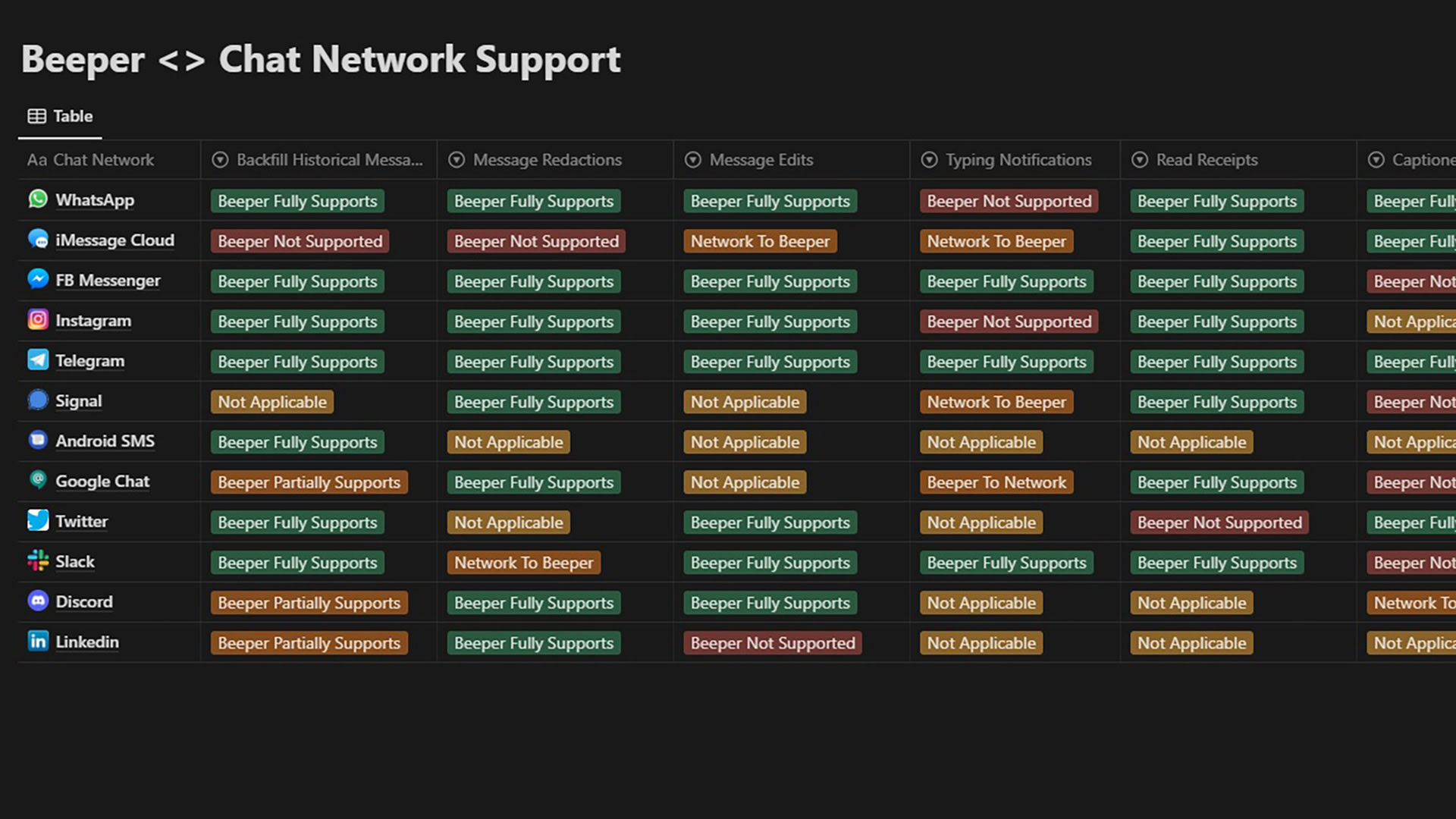
Slack is one of my most-used messaging apps. Technically, it is categorized in the “Labs” section of Beeper’s support list, along with Discord. When I signed in with my Slack account, the Beeper software even warned me: Slack doesn’t work well with Beeper, so you should probably avoid it.
“No big deal,” I said to myself. “I can just add everything else to Beeper and leave Slack alone.”
Oh, but also, Beeper doesn’t support RCS when bridged to Google Messages (the company says this is coming sometime in 2023). So I’ll leave Messages alone, too. Ah, but Beeper also won’t support typing notifications from Instagram DMs, which will be annoying. Guess I’ll leave that out, too.
You see where this is going. With almost every chat service, there’s something fundamental that Beeper can’t replicate. You can see an up-to-date list of all Beeper’s missing features for each platform at the link. This forces you to decide whether losing out on that feature (or features, plural) is worth the convenience of having everything under one roof.
Unfortunately, Beeper can't support many essential features of some chat apps.
Even Beeper’s trump card — the ability to use iMessage on Android — leaves much to be desired. When I chatted with my iPhone-using friends on my Pixel 7 Pro, my bubble wasn’t green, but it wasn’t blue, either. Instead, it was grey, and certain iMessage features still didn’t work, such as typing notifications.
On top of all this, Beeper is also its own chat app, which is how Migicovsky and the team communicate with users. It’s delightfully ironic that this noble ambition to make chat simpler also involves creating a new chat app to throw on top of the pile.
Obviously, Beeper is still in beta. Things will only get better. However, now that I’ve tasted the food, so to speak, I’m not sure this particular restaurant is for me.
Beeper is in beta, but even when it exits, I don’t want it
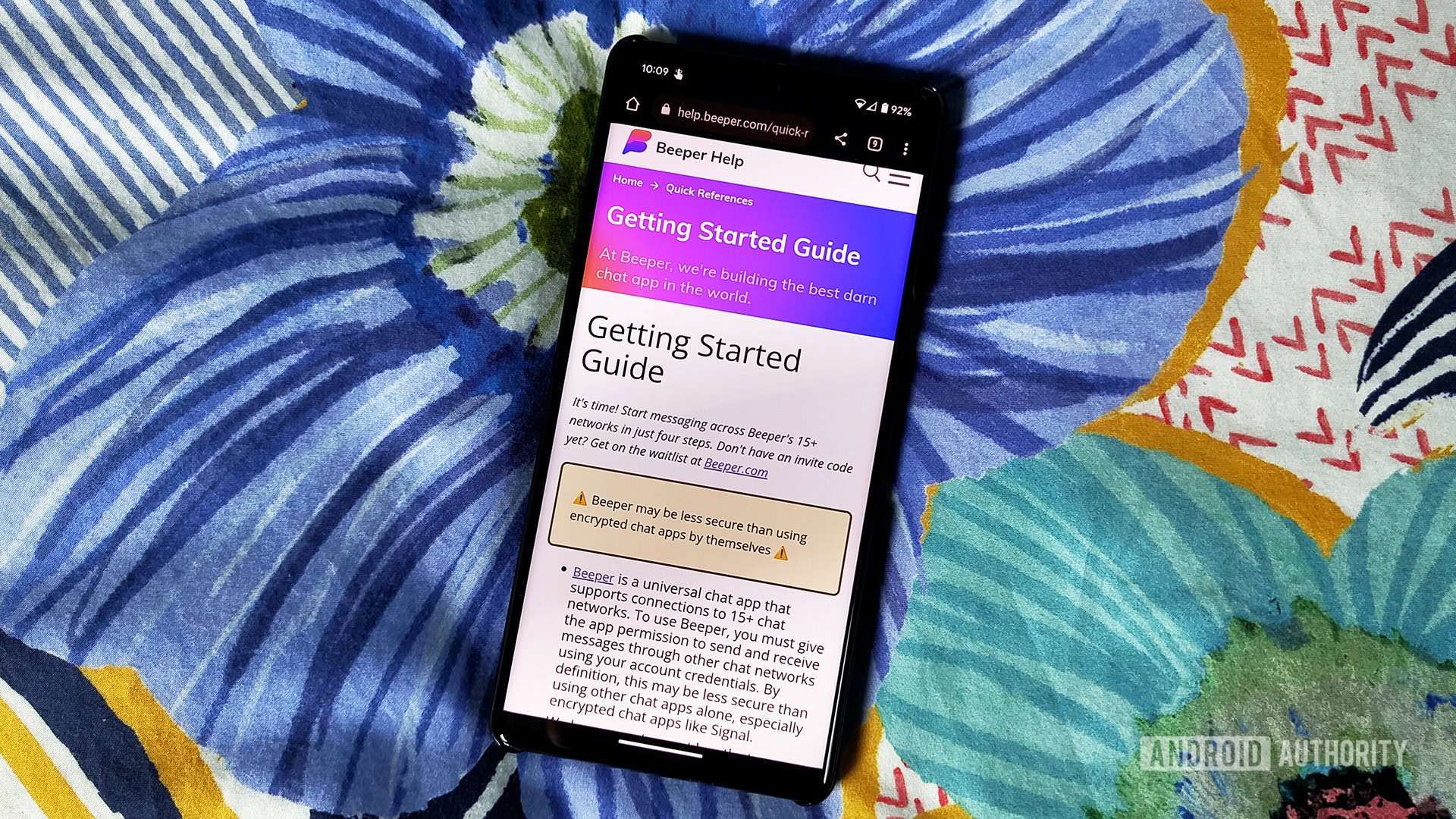
Let’s pretend that Beeper achieves 100% parity with all 15 of its supported services. This is highly unlikely to ever happen, but, even if it did, I still don’t think I would want to use it.
First, the elephant in the room needs to be addressed: security. In Beeper’s start-up guide, the first thing you see is a huge alert box: “Beeper may be less secure than using encrypted chat apps by themselves.” Fundamentally, there’s no way to fix this. To use any of the chat apps, you need to link Beeper to that service using your credentials, which is inherently more insecure than logging into the app directly. Beeper is quick to defend itself by pointing out its robust privacy policy, its ethical business practices with a user-centered focus, and its use of end-to-end encryption (E2EE). However, that doesn’t protect your credentials from hackers that could gain access to Beeper and send your grandma a message through WhatsApp pretending to be you and asking to wire $1,000 to an account in China.
Security issues, the inevitable lack of feature parity with native apps, and generalized UI design are all reasons Beeper just won't ever work for me.
Even if you can look past security, there are other problems. For example, in a Twitter DM, I could want to “@” someone. If I do that in the native app, it will start to auto-fill usernames as I go. This is helpful because plenty of people I know have very different usernames across social media, and I can’t remember them all. Beeper doesn’t help with that, though. Obviously, in this specific scenario, I’d need to jump over to the main Twitter app to find the username I need, thus defeating the whole point of a consolidated app.
Finally, Beeper’s UI is the same for every app. This is, no doubt, by design. However, it can be disorienting to not know which service you’re using just by looking at it. Beeper tries to help by putting the service’s name and icon on the page, but that’s no replacement for the iconic looks of each chat app. This might sound nitpicky, but imagine using Facebook Messenger in a window that looks like a Windows Command Prompt. Sure, that design would work, but it wouldn’t feel right.
These are all things Beeper will have a very tough time fixing, no matter how good it gets at integrating other services. This brings me to what I’ve determined is the real solution to overwhelming messaging options.
The real solution is to get friends/family to pick a chat app
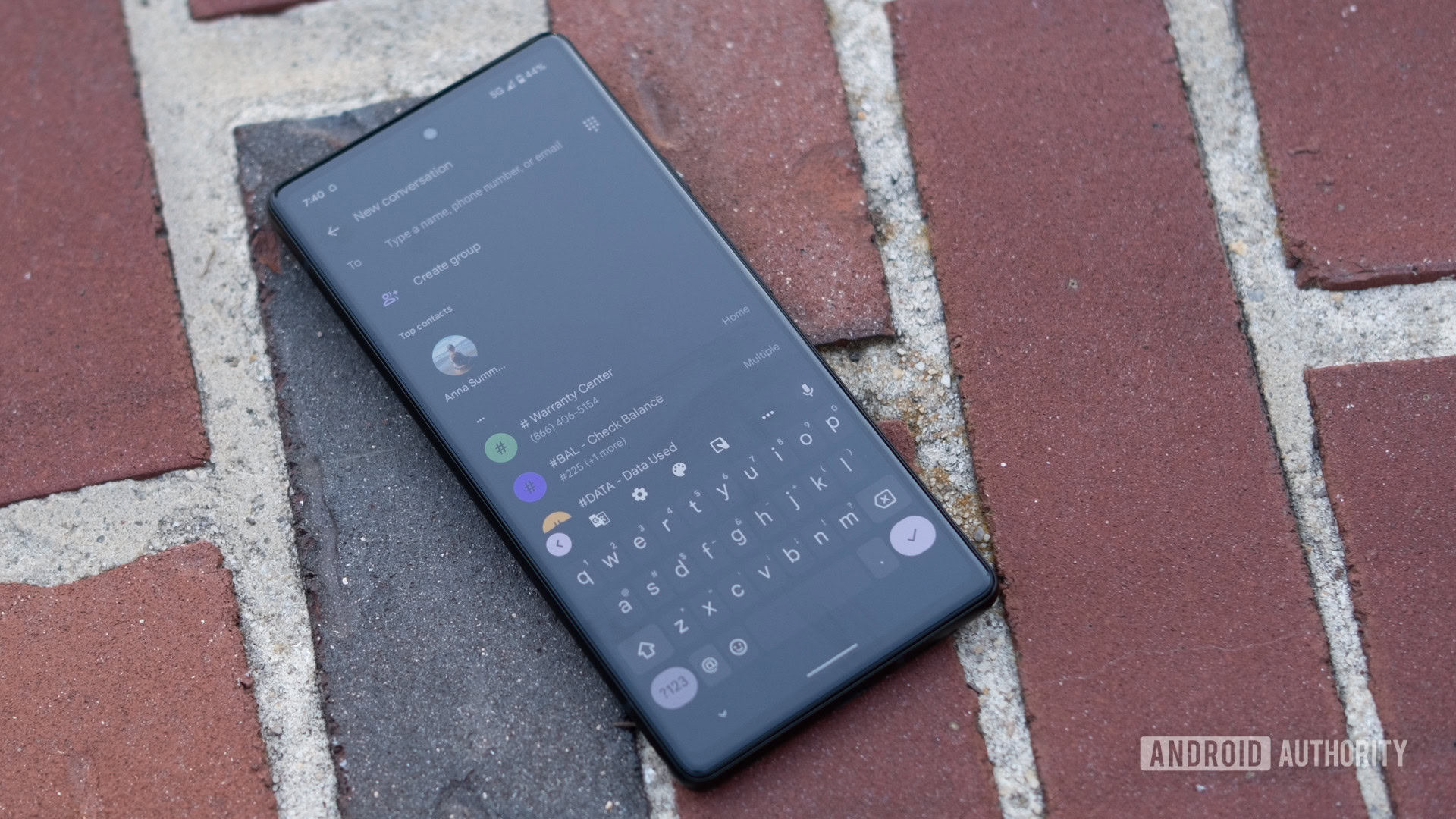
In Migicovsky’s original announcement for Beeper, he describes two types of people. First, there are “siloed” messengers: people who stay in one app and demand that anyone who wants to chat with them use that app. This is what iPhone users in the United States do. On the other hand, there are “ambi-social” users: people who have many chat apps and need to remember which people use which app to accommodate them all. This is the category I’m in.
Beeper wants to be the best of both worlds by allowing your friends and family to stay in the apps they prefer but silo yourself in one place. For reasons I’ve already pointed out, though, it can’t do that, at least not efficiently enough — or securely enough — to make it worth my time.
Beeper is a complicated solution to a simple problem: Your friends and family need to stop using too many different chat apps.
Instead, the real third solution is a mix of both “siloed” and “ambi-social.” Use the big platforms that most of your friends and family use, and encourage as many people as possible to use one of these platforms over the other options.
Right now, I use nine chat apps: Messages, Slack, Facebook Messenger, Instagram, Twitter, WhatsApp, Signal, Telegram, and LinkedIn. Slack and LinkedIn are just for work, so they can exist as their own thing. Most people on Signal and Telegram also use WhatsApp, so I can start only messaging those folks on WhatsApp. I barely use Facebook and Twitter anymore, so I can just tell anyone who messages me there to text me or use WhatsApp. That leaves me using Messages, Instagram, LinkedIn, Slack, and WhatsApp. I can live with five chat apps, I think.
This obviously doesn’t reduce the number of apps I need to install on my phone, nor does it solve the iMessage on Android mess. But the problem of messaging app overload can only be mitigated by exercising some self-control and removing outliers from your life. That friend who only talks to you on Twitter surely uses another messaging app too. That solution isn’t as fun sounding as an app like Beeper, but it’s more practical, and will actually achieve your intended outcome.